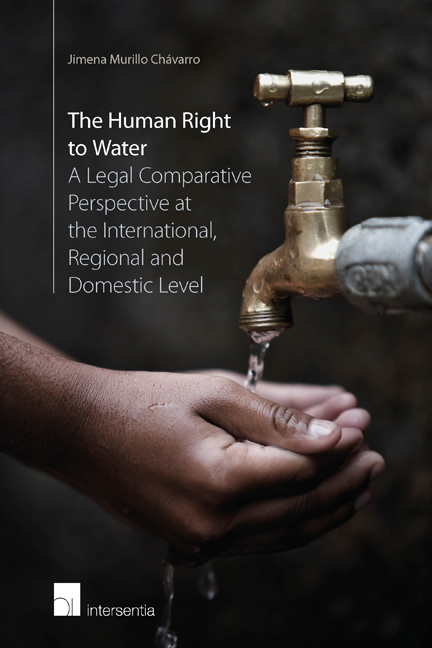 The Human Right to Water
The Human Right to Water Book contents
- Frontmatter
- Dedication
- Contents
- List of Abbreviation
- Table of Cases and Other Materials
- Table of Treaties and Other Instruments
- Chapter 1 General Introduction
- Chapter 2 Emergence, Definition and Core Content of the Human Right to Water
- Chapter 3 Recognition of the Human Right to Water at the International Level
- Chapter 4 Recognition of the Human Right to Water at the Regional Level
- Chapter 5 Recognition of the Human Right to Water at the Domestic Level: a Case Study Approach
- Chapter 6 Extraterritorial Application of the Human Right to Water in a Transboundary Watercourse Context
- Chapter 7 General Conclusions
- Bibliography
- Index
Chapter 2 - Emergence, Definition and Core Content of the Human Right to Water
Published online by Cambridge University Press: 15 December 2017
- Frontmatter
- Dedication
- Contents
- List of Abbreviation
- Table of Cases and Other Materials
- Table of Treaties and Other Instruments
- Chapter 1 General Introduction
- Chapter 2 Emergence, Definition and Core Content of the Human Right to Water
- Chapter 3 Recognition of the Human Right to Water at the International Level
- Chapter 4 Recognition of the Human Right to Water at the Regional Level
- Chapter 5 Recognition of the Human Right to Water at the Domestic Level: a Case Study Approach
- Chapter 6 Extraterritorial Application of the Human Right to Water in a Transboundary Watercourse Context
- Chapter 7 General Conclusions
- Bibliography
- Index
Summary
INTRODUCTION
Water is an essential element for life; a minimum intake of water is necessary for human survival. Every human being needs to drink a minimum amount of water to prevent death from dehydration, and water is also necessary for other basic needs, such as sanitation, personal and house cleaning, and food production, among others.
According to the World Health Organization (WHO) about 768 million people still do not have access to improved sources of drinking-water, 2.5 billion people lack access to improved sanitation and about 2 million annual deaths are attributable to the use of unsafe water and sanitation. Access to improved water sources refers to household connections, public taps or standpipes, boreholes, protected wells or springs, and methods of rainwater collection. Unimproved sources include vendors, tanker trucks, unprotected wells and springs, as well as surface water (rivers, dams, lakes, ponds, streams, canals, or irrigation channels).
Despite the fact that water is a limited natural resource and a public good fundamental for life and health, a human right to water started to develop recently in international human rights law, and in the constitutional sphere of some states. A number of statements, declarations, resolutions and even international conventions have recognised water as an essential element necessary to satisfy basic human needs. The following subsection contains a descriptive evolution of the recognition of the emerging human right to water at the international level. This chapter also examines the main elements that compose this right, as well as the state's obligations that derive from it.
EMERGENCE OF THE HUMAN RIGHT TO WATER
Since the end of the 1960s scientists, politicians and experts in different fields started to realise the fundamental relationship between humans and the environment. They also realised the emerging problems from the scarcity of some natural resources, such as the limited quantities of water resources in certain areas of the world or during certain periods of the year. Since then, the importance of access to water has been recognised in declarations, action plans, agendas, statements, treaties and resolutions. The way the right to water has emerged in different spheres will be discussed in a chronological evolution.
- Type
- Chapter
- Information
- The Human Right to WaterA Legal Comparative Perspective at the International, Regional and Domestic Level, pp. 7 - 42Publisher: IntersentiaPrint publication year: 2015


